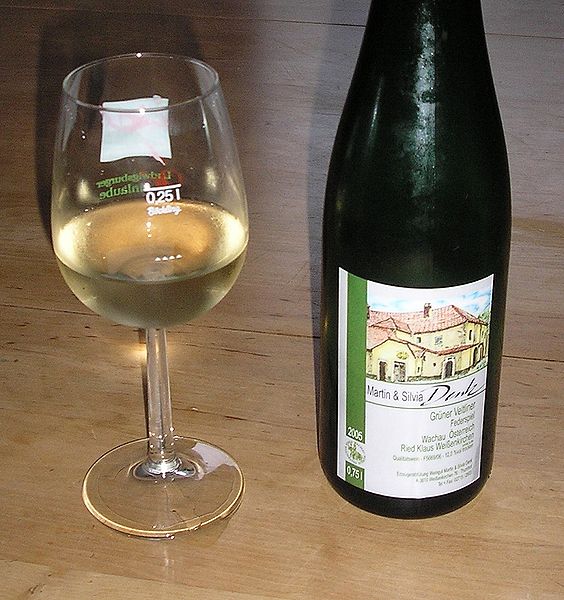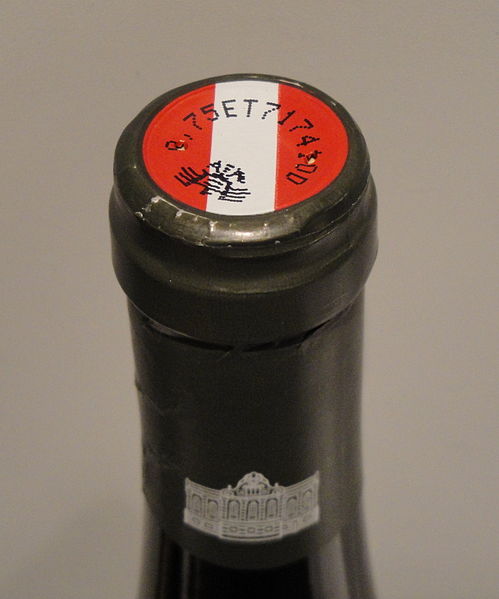Blaufränkisch is a dark-skinned variety of grape used for red wine. Blaufränkisch, which is a late-ripening variety, produces red wines which are typically rich in tannin and may exhibit a pronounced spicy character.
Blaufränkisch grapes growing in Burgenland, Austria
DNA analysis has shown that Blaufränkisch is a crossing of Gouais blanc (pictured) and another unknown variety.
Blaufränkisch leaf from Red Willow Vineyard in Washington State.
In the Leithaberg DAC, Blaufränkisch is often blended with St. Laurent (pictured)
Austrian wines are mostly dry white wines, though some sweeter white wines are also produced. About 30% of the wines are red, made from Blaufränkisch, Pinot noir and locally bred varieties such as Zweigelt. Four thousand years of winemaking history counted for little after the "antifreeze scandal" of 1985, when it was revealed that some wine brokers had been adulterating their wines with diethylene glycol. The scandal destroyed the market for Austrian wine and compelled Austria to tackle low standards of bulk wine production, and reposition itself as a producer of quality wines. The country is also home to Riedel, makers of some of the most expensive wine glasses in the world. Some of the best producers of Austria include Weingut Bründlmayer, Weingut F.X. Pichler and Weingut Franz Hirtzberger, Weingut Hutter, Weingut Eigl and Wellanschitz.
An Austrian wine made from Grüner Veltliner, by far the most grown variety in Austria.
The Austrian wine seal is used on all wines at Qualitätswein level
The Smaragd (emerald) Lizard, Lacerta viridis, which gives its name to the highest level of the Wachau wine classification.







